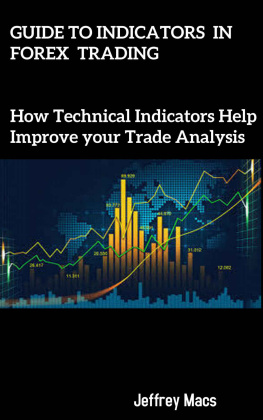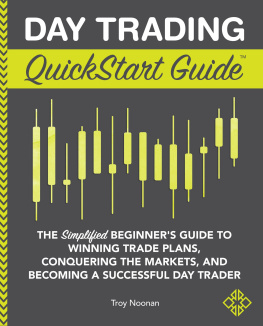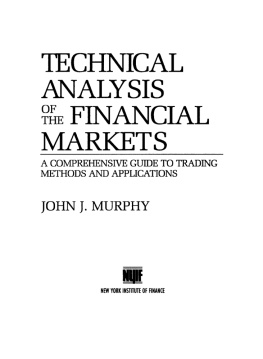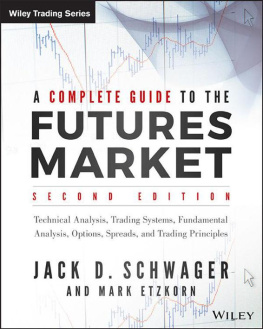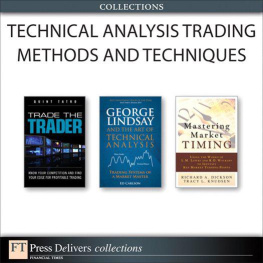Volume Profile
Market Profile
Order Flow
Next Generation of Daytrading
Johannes Forthmann
Impressum
Author: Johannes Forthmann
- Edition
Copyright 2020, All Rights Reserved
Published by Forthmann Book Publishing, Vana-Veerenni tn4, 10135 Tallinn, Estonia
Email: j.forthmann@futuretrade.ch
This work is copyrighted. All rights of exploitation, also in extracts, are reserved.
About the author
Johannes Forthmann is a German economist with more than 20 years of experience in the Futures markets. He worked for a Swiss commodity and asset management company.
RISK DISCLOSURE
FUTURES AND FOREX TRADING CONTAINS SUBSTANTIAL RISK AND IS NOT FOR EVERY INVESTOR. AN INVESTOR COULD POTENTIALLY LOSE ALL OR MORE THAN THE INITIAL INVESTMENT. RISK CAPITAL IS MONEY THAT CAN BE LOST WITHOUT JEOPARDIZING ONES FINANCIAL SECURITY OR LIFE STYLE. ONLY RISK CAPITAL SHOULD BE USED FOR TRADING AND ONLY THOSE WITH SUFFICIENT RISK CAPITAL SHOULD CONSIDER TRADING. PAST PERFORMANCE IS NOT NECESSARILY INDICATIVE OF FUTURE RESULTS.
HYPOTHETICAL PERFORMANCE DISCLOSURE CFTC RULE 4.41
HYPOTHETICAL OR SIMULATED PERFORMANCE RESULTS HAVE CERTAIN LIMITATIONS. UNLIKE AN ACTUAL PERFORMANCE RECORD, SIMULATED RESULTS DO NOT REPRESENT ACTUAL TRADING. ALSO, SINCE THE TRADES HAVE NOT BEEN EXECUTED, THE RESULTS MAY HAVE UNDER-OR-OVER COMPENSATED FOR THE IMPACT, IF ANY, OF CERTAIN MARKET FACTORS, SUCH AS LACK OF LIQUIDITY. SIMULATED TRADING PROGRAMS IN GENERAL ARE ALSO SUBJECT TO THE FACT THAT THEY ARE DESIGNED WITH THE BENEFIT OF HINDSIGHT. NO REPRESENTATION IS BEING MADE THAT ANY ACCOUNT WILL OR IS LIKELY TO ACHIEVE PROFIT OR LOSSES SIMILAR TO THOSE SHOWN. THE TRADING IDEAS AND TRADING METHODS SHOWN IN THIS BOOK MAY HAVE WORKED IN THE PAST. PAST RESULTS ARE NOT NECESSARILY INDICATIVE OF FUTURE RESULTS. WHILE THERE IS A POTENTIAL FOR PROFITS THERE IS ALSO A HUGE RISK OF LOSS. THEREFORE IT IS ADVISED TO CONSIDER CAREFULLY WHETHER SUCH TRADING IS SUITABLE FOR YOU WITH REGARD TO YOUR FINANCIAL SITUATION. ALL INFORMATION IN THIS BOOK SERVES FOR EDUCATIONAL PURPOSES ONLY. IT DOES NOT CONSTITUTE AN INSTRUCTION OR A RECOMMENDATION TO TRADE FUTURES CONTRACTS OR FOREX. PROFESSIONAL ADVICE SHOULD BE SOUGHT WHERE APPROPRIATE. NEITHER THE AUTHOR NOR THE PUBLISHER IS RESPONSIBLE FOR LOSSES ARISING FROM THE USE OF THE CONTENT OF THIS BOOK.
Table of Contents
Introduction
The year 2020 has called into question the validity of medium and long-term forecasts. If a hundred experts were to be asked where the journey in the financial markets is heading, the answers would probably be equally controversial. This year, situations could be observed there that had not occurred together in a whole century before.
In view of this, many may be interested in thinking more short-term and acting independently. No doubt it is easier to predict whether it will rain today than in three weeks' time. In the "short range" you can find two forms of trading, day trading and swing trading. Both are independent of the respective market direction. A day trader holds his position for a few minutes or until the end of the day.
A swing trader works with a larger time window. His expectation horizon is several days, weeks or months. However, he has to pay for the advantage of an "overarching view" by being exposed to significantly more future imponderables. He is a prisoner of his longer time horizon.
This book was written for day traders searching for new ways. However, it is also suitable for beginners with basic knowledge. Countless promises on the internet make it difficult for especially beginning, ambitious traders to find their way through a maze of courses. These often leave the impression that all you have to do to succeed is to follow a crossover of two lines, a few chart patterns, indicators and money management rules.
For some time now, market and volume profiles as well as order flow analysis have been the talk of the town. In my opinion, these belong together logically and in terms of content. I was all the more surprised that until today there is no book available in either the German or English-speaking world that combines these useful forms of analysis and also explains how to use them effectively in day trading.
Classical Technical Analysis, as taught in hundreds of books has proved to be unprofitable for retail traders in most cases. Otherwise, the loss rate of technically oriented traders would not be so extremely high. One first reason is the fact that Technical Analysis was developed many decades ago under market conditions that have ceased to exist long ago. Initially developed as a pseudo-science and successfully used by a few advanced traders, it has become increasingly popular as a science that makes the dubious claim of predicting future price movements based on historical series of numbers or simple geometric shapes and lines.
However, a look at today's globally networked markets shows that many things have changed fundamentally. Probably the most important change is the dominance of a few large market participants, who handle about 80% of the total global trading volume. Their decisions are based only to a small extent on technical chart criteria. They spend a great deal of time and effort on fundamental research, which private traders can never compete with. However, as they have very large resources at their disposal, they cannot easily build or reduce their positions in a single process. In many cases they first have to create "space" and prepare their operations undetected.
This leads to movements that do not fit into the picture of technically oriented traders. Whereas in earlier times we had to deal more with breakouts from known chart formations or trading ranges, today we see a multitude of false breakouts. These mostly take place in so-called liquidity zones. These are areas where either pending orders of small traders are located or are placed more frequently.
If a false outbreak then occurs, many positions are stopped or closed and thus fall into the hands of strong market participants who pursue other objectives. In the eyes of Technical Analysis, this is an upside down world. Being extremely well known by the trading public makes it easy for market makers to deceive. If you look at the whole thing a little more realistically, you may well ask yourself
Why should large market participants who invest hundreds of millions in fundamental research in the 21st century be guided by the figures of an Italian mathematician who lived in the 13th century (Fibonacci)? And which every trader knows.
What is different about Profile and Order Flow Analysis?
The main difference to other forms of analysis is that there is no guessing involved. Instead, the activities of major market participants are observed in the here and now. In this sense, we are by no means dealing with the false gods of Technical Analysis.
The market profile related to the volume profile has been known for over 40 years. The market profile is based on the thesis that significant price shifts are only possible if large market participants with a higher investment horizon become active. It also determines the price level at which prices have spent both the longest and the shortest time in a given period.
Some of the principles of market profile analysis from that time have lost their validity as the markets have changed. However, the progressive development of chart software has led to a renaissance of two central principles of this form of analysis in particular. By integrating them into a chart, market profile analysis can give traders a quick overview of who is in control of the market. A further current aspect is that the largest liquidity zones can be identified more clearly and precisely. Given that today's markets are characterized by a myriad of false outbreaks, this can offer significant advantages to a day trader.



